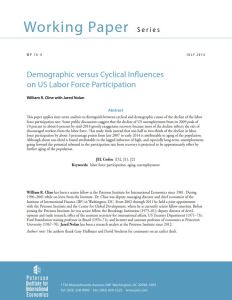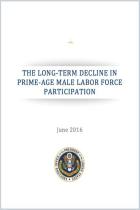Únase a getAbstract para acceder al resumen.

Únase a getAbstract para acceder al resumen.
William R. Cline and Jared Nolan
Demographic versus Cyclical Influences on US Labor Force Participation
Peterson Institute for International Economics, 2014
¿De qué se trata?
Demography may or may not be destiny, but aging baby boomers are having a significant impact on the US labor market.
Recommendation
Demography may or may not be destiny, but aging baby boomers are having a significant impact on the labor market in the United States. Beginning in 2008, the Great Recession raised American unemployment; that same year, the first boomers reached retirement age. This concise paper on workforce demographics by economist William R. Cline and researcher Jared Nolan of the Peterson Institute for International Economics untangles the temporary phenomenon of discouraged workers dropping out of the labor pool from the permanent loss of retiring employees and lends a new perspective to the falling US unemployment rate. getAbstract recommends this report for the careful way it reveals how the Great Recession distracted everyone from important and long-lasting demographic trends.
Summary
About the Authors
William R. Cline is a senior fellow at the Peterson Institute for International Economics, where Jared Nolan worked as a research analyst before joining Cornerstone Research.



















Comment on this summary